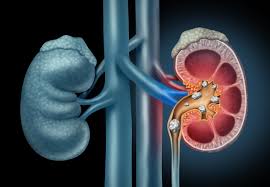7.7 Finding Particular Solutions Using Initial Conditions and Separation of Variables
Introduction
In AP Calculus AB, mastering differential equations is essential for solving real-world problems involving rates of change. Finding particular solutions using initial conditions and separation of variables is a fundamental skill that allows students to derive unique solutions tailored to specific scenarios. This topic builds on your understanding of differential equations by introducing methods to find solutions that satisfy given initial conditions, ensuring that the solutions are applicable to real-life situations.
Defining Key Concepts
Differential Equations
Differential equations are mathematical equations that relate a function with its derivatives. They are used to model various phenomena where change is involved, such as population growth, motion, and heat distribution.
Example:
General Solution vs. Particular Solution
General Solution: A solution to a differential equation that contains one or more arbitrary constants. It represents an entire family of solutions.
Example:
Here, is an arbitrary constant.
Particular Solution: A unique solution derived from the general solution by applying specific initial conditions, eliminating the arbitrary constants.
Example: Given
So, the particular solution is:
Separation of Variables
Separation of Variables is a method used to solve first-order differential equations by rearranging the equation so that each variable appears on opposite sides of the equation.
Example:
Can be rewritten as:
5 Must-Know Facts for Your Next Test
Definition of Particular Solution
- Fact: A particular solution to a differential equation satisfies both the equation and the given initial conditions.
- Explanation: Unlike the general solution, which contains arbitrary constants, the particular solution is unique for specific initial conditions.
Separation of Variables Technique
- Fact: Separation of variables involves rearranging the differential equation so that all terms containing one variable are on one side and all terms containing the other variable are on the opposite side.
- Explanation: This allows for integration of both sides independently to find the general solution.
Role of Initial Conditions
- Fact: Initial conditions are specific values of the function and its derivatives at a particular point, used to determine the constants in the general solution.
- Explanation: They provide the necessary information to derive the unique particular solution relevant to a given problem.
Integration Constants
- Fact: The arbitrary constant in the general solution is determined by applying initial conditions.
- Explanation: Solving for transforms the general solution into a particular solution that meets the specified conditions.
Domain Restrictions
- Fact: Solutions to differential equations may have domain restrictions based on the initial conditions or the nature of the equation itself.
- Explanation: Singularities or physical constraints can limit the range of valid solutions, ensuring they are meaningful and applicable.
Steps for Solving Differential Equations Using Separation of Variables and Initial Conditions
Separate the Variables
- Action: Rearrange the equation so that all terms involving y are on one side and all terms involving x are on the other.
- Example:
Integrate Both Sides
- Action: Integrate the -terms with respect to and the -terms with respect to , adding the constant of integration .
- Example:
Solve for the General Solution
- Action: Express in terms of to obtain the general solution.
- Example:
Apply Initial Conditions to Find C
- Action: Substitute the given initial condition into the general solution to solve for the constant C.
- Example: Given :
Write the Particular Solution
- Action: Substitute back into the general solution to obtain the particular solution.
- Example:
Sample Problem with Step-by-Step Solution
Problem
Find the particular solution of the differential equation given the initial condition .
Solution
Step 1: Separate the Variables
Step 2: Integrate Both Sides
Step 3: Perform the Integrations
The integral on the right can be solved using partial fractions:
Solving for and :
Let :
Let :
Thus,
Step 4: Write the General Solution
Step 5: Apply the Initial Condition to Find
Given :
Simplify:
Step 6: Write the Particular Solution
This can be further simplified if desired, but this form satisfies the differential equation and the initial condition.
Review Questions
1. How do societal expectations impact the roles of women in agriculture compared to men?
Answer:
Societal expectations often place men in dominant roles within agriculture while relegating women to supportive or secondary roles. This discrepancy can hinder women’s access to resources like land, credit, and education, which are critical for success in farming. By defining men’s work as more valuable or important, societies may overlook women’s contributions to agricultural productivity and food security. This imbalance not only affects women’s economic empowerment but also limits the overall efficiency and sustainability of agricultural practices.
2. What strategies can be implemented to challenge and change societal expectations regarding women’s roles in agriculture?
Answer:
To challenge societal expectations, strategies such as promoting women’s access to education and training in agricultural practices can be effective. Additionally, raising awareness about the importance of women’s contributions to agriculture can help shift perceptions. Implementing policies that support gender equity in farming practices, such as land reform and access to credit, will also play a key role in transforming these societal norms over time. Community engagement programs and media campaigns that highlight successful women farmers can further challenge and change traditional gender roles.
3. Evaluate the long-term effects of changing societal expectations on women’s empowerment within the agricultural sector.
Answer:
Changing societal expectations can lead to significant long-term effects on women’s empowerment in agriculture. As women gain recognition for their contributions, they may gain access to resources, decision-making positions, and economic opportunities previously denied to them. This shift not only improves individual livelihoods but also enhances community resilience and food security. Empowering women can lead to sustainable agricultural practices that benefit entire societies by fostering innovation, increasing productivity, and promoting equitable resource distribution. Over time, this can contribute to broader social and economic development, reducing poverty and enhancing gender equality.
Related Terms
Slope Field
Definition:
A slope field is a graphical representation of a differential equation that shows the slope of the solution curve at various points in the plane. It helps visualize the behavior of solutions without solving the equation explicitly.
Key Points:
- Each small line segment in the slope field has a slope equal to the value of the differential equation at that point.
- Slope fields are useful for estimating the direction and shape of solution curves.
- They provide insight into the stability and long-term behavior of solutions.
Integration Constant
Definition:
An integration constant () is an arbitrary constant that appears when performing indefinite integrals. It represents the family of all possible solutions to a differential equation before applying initial conditions.
Key Points:
- Integration constants are essential for capturing the generality of solutions.
- They are determined by applying initial conditions to find particular solutions.
- Omitting the integration constant can lead to incomplete or incorrect solutions.
Initial Value Problem
Definition:
An initial value problem consists of a differential equation along with specified values of the unknown function and possibly some of its derivatives at a particular point. Solving an initial value problem means finding the particular solution that satisfies these initial conditions.
Key Points:
- Initial value problems ensure uniqueness of solutions.
- They are common in modeling real-world phenomena where initial states are known.
- The existence and uniqueness of solutions depend on the differential equation and the initial conditions.
Existence and Uniqueness Theorem
Definition:
The Existence and Uniqueness Theorem states that under certain conditions, an initial value problem has exactly one solution. This theorem provides guarantees about the solvability and uniqueness of solutions to differential equations.
Key Points:
- Ensures that a unique particular solution exists given specific initial conditions.
- Conditions typically involve the continuity of the functions involved in the differential equation.
- Helps in understanding the behavior of solutions and their dependence on initial conditions.
Practical Applications
Population Modeling
Description:
Differential equations are used to model population dynamics, predicting how populations change over time based on birth rates, death rates, immigration, and emigration.
Example:
The logistic growth model:
where is the population size, is the growth rate, and is the carrying capacity.
Physics and Engineering
Description:
Differential equations describe various physical phenomena such as motion, heat transfer, and electrical circuits. They are fundamental in designing systems and understanding natural laws.
Example:
Newton’s second law:
where is velocity, is force, and is mass.
Economics
Description:
In economics, differential equations model economic growth, investment, and consumption patterns. They help in forecasting and making informed policy decisions.
Example:
The Solow growth model:
where is capital per worker, is the savings rate, is the production function, n is population growth, and is the depreciation rate.
Implications and Considerations
Domain Restrictions
Description:
Solutions to differential equations may not be defined for all values of the independent variable. Domain restrictions ensure that solutions are mathematically and physically meaningful.
Reasons for Domain Restrictions:
- Singularities: Points where the differential equation becomes undefined, such as division by zero.
- Physical Constraints: Situations where certain values are not possible, like negative populations.
- Mathematical Constraints: Conditions required for the validity of the solution, such as positivity of certain variables.
Example:
In the differential equation , the solution is undefined at and due to division by zero.
Physical Meaningfulness
Description:
Solutions should align with real-world scenarios they represent. A solution may be mathematically correct but physically meaningless if it violates real-world constraints.
Example:
A solution predicting negative velocity in a physical system where velocity cannot be negative would be physically meaningless.
Challenges and Common Mistakes
Forgetting the Integration Constant
- Mistake: Omitting during integration leads to incomplete general solutions.
- Solution: Always include when performing indefinite integrals.
Incorrect Separation of Variables
- Mistake: Failing to correctly separate variables can result in incorrect solutions or unsolvable equations.
- Solution: Carefully rearrange terms to ensure all -terms are on one side and -terms on the other.
Misapplying Initial Conditions
- Mistake: Incorrectly substituting initial conditions leads to wrong particular solutions.
- Solution: Double-check substitutions and arithmetic when solving for .
Ignoring Domain Restrictions
- Mistake: Presenting solutions without considering where they are valid can lead to incorrect interpretations.
- Solution: Always identify and state domain restrictions based on the differential equation and initial conditions.
Integration Errors
- Mistake: Making mistakes during integration steps can propagate errors through the solution.
- Solution: Practice integration techniques and verify each step carefully.
Conclusion
Finding particular solutions using initial conditions and separation of variables is a pivotal skill in AP Calculus AB that enables students to derive unique solutions tailored to specific scenarios. By mastering this technique, you can solve a wide range of differential equations encountered in various fields such as biology, physics, engineering, and economics. Understanding the distinction between general and particular solutions, applying initial conditions correctly, and recognizing domain restrictions are essential for ensuring that your solutions are both mathematically accurate and physically meaningful.
With consistent practice and a solid grasp of the underlying principles, you can confidently tackle differential equations and excel in your calculus studies. Remember to follow the step-by-step process, avoid common mistakes, and always consider the broader implications of your solutions.
Practice Questions for Further Learning
- Solve the differential equation with the initial condition .
- Find the particular solution for given .
- Determine the particular solution of with .
- Use separation of variables to solve with the initial condition .
- Find the particular solution for given .
- Solve with .
- Determine the particular solution for given .
- Find the particular solution of with .
- Use separation of variables to solve with .
- Find the particular solution for given .
Frequently Asked Questions (FAQs)
1. What is the difference between a general solution and a particular solution?
Answer:
A general solution to a differential equation includes one or more arbitrary constants and represents an entire family of solutions. A particular solution is a specific solution derived from the general solution by applying given initial conditions, thereby eliminating the arbitrary constants and providing a unique solution relevant to a specific scenario.
2. How does separation of variables work in solving differential equations?
Answer:
Separation of variables is a method used to solve first-order differential equations by rearranging the equation so that each variable appears on opposite sides. This allows for independent integration of each side with respect to its respective variable, leading to the general solution. Initial conditions can then be applied to find the particular solution.
3. Why are initial conditions important in solving differential equations?
Answer:
Initial conditions provide specific values for the function and its derivatives at a particular point, which are essential for determining the arbitrary constants in the general solution. This process yields a unique particular solution that accurately models the given scenario.
4. Can all differential equations be solved using separation of variables?
Answer:
No, separation of variables is only applicable to differential equations that can be rearranged into a form where each variable appears on separate sides of the equation. Not all differential equations fit this criterion, and other methods may be required for more complex equations.
5. What are domain restrictions and why are they important?
Answer:
Domain restrictions specify the range of values for the independent variable over which the solution to a differential equation is valid. They are important because solutions may become undefined or violate real-world constraints outside of this range. Recognizing domain restrictions ensures that solutions are both mathematically and physically meaningful.
6. How do you determine the constant of integration when solving a differential equation?
Answer:
The constant of integration () is determined by applying the given initial conditions to the general solution. By substituting the initial values into the general solution, you can solve for , thereby obtaining the particular solution.
7. What is an initial value problem?
Answer:
An initial value problem consists of a differential equation along with specified initial conditions. Solving an initial value problem involves finding the particular solution that satisfies both the differential equation and the initial conditions, ensuring uniqueness of the solution.
8. How can you check if your particular solution is correct?
Answer:
To verify the correctness of a particular solution:
- Substitute it back into the original differential equation to ensure it satisfies the equation.
- Apply the initial conditions to confirm that the solution meets the specified values.
9. What should you do if the differential equation leads to a logarithm of a negative number?
Answer:
If the solution involves the logarithm of a negative number, it indicates a domain restriction. You must determine the intervals where the argument of the logarithm remains positive and specify these intervals as part of the solution’s domain. Additionally, consider the context of the problem to ensure the solution is physically meaningful.
10. Why is it important to include the constant of integration when solving differential equations?
Answer:
Including the constant of integration () is crucial because it represents the entire family of solutions to the differential equation. It allows for the determination of a unique particular solution when initial conditions are applied. Omitting can result in incomplete or incorrect solutions.
References
- Khan Academy – Differential Equations
- AP Classroom – Differential Equations
- Paul’s Online Math Notes – Separation of Variables
- MIT OpenCourseWare – Differential Equations
- Wolfram MathWorld – Separation of Variables
- College Board – AP Calculus AB Course Description
- PatrickJMT – Separation of Variables
- AP Calculus AB Resources – Purdue OWL
- The Balance – Solving Differential Equations
- Stanford Encyclopedia of Philosophy – Differential Equations
- University of California – Differential Equations
- Coursera – Differential Equations for Engineers
- MIT OpenCourseWare – Solving Differential Equations
- Wikipedia – Separation of Variables
- AP Calculus Review – General and Particular Solutions
- Math is Fun – Differential Equations
- Brightstorm – Separation of Variables
- Purplemath – Solving Differential Equations
- YouTube – AP Calculus AB Differential Equations
- MathWorld – Initial Value Problem







